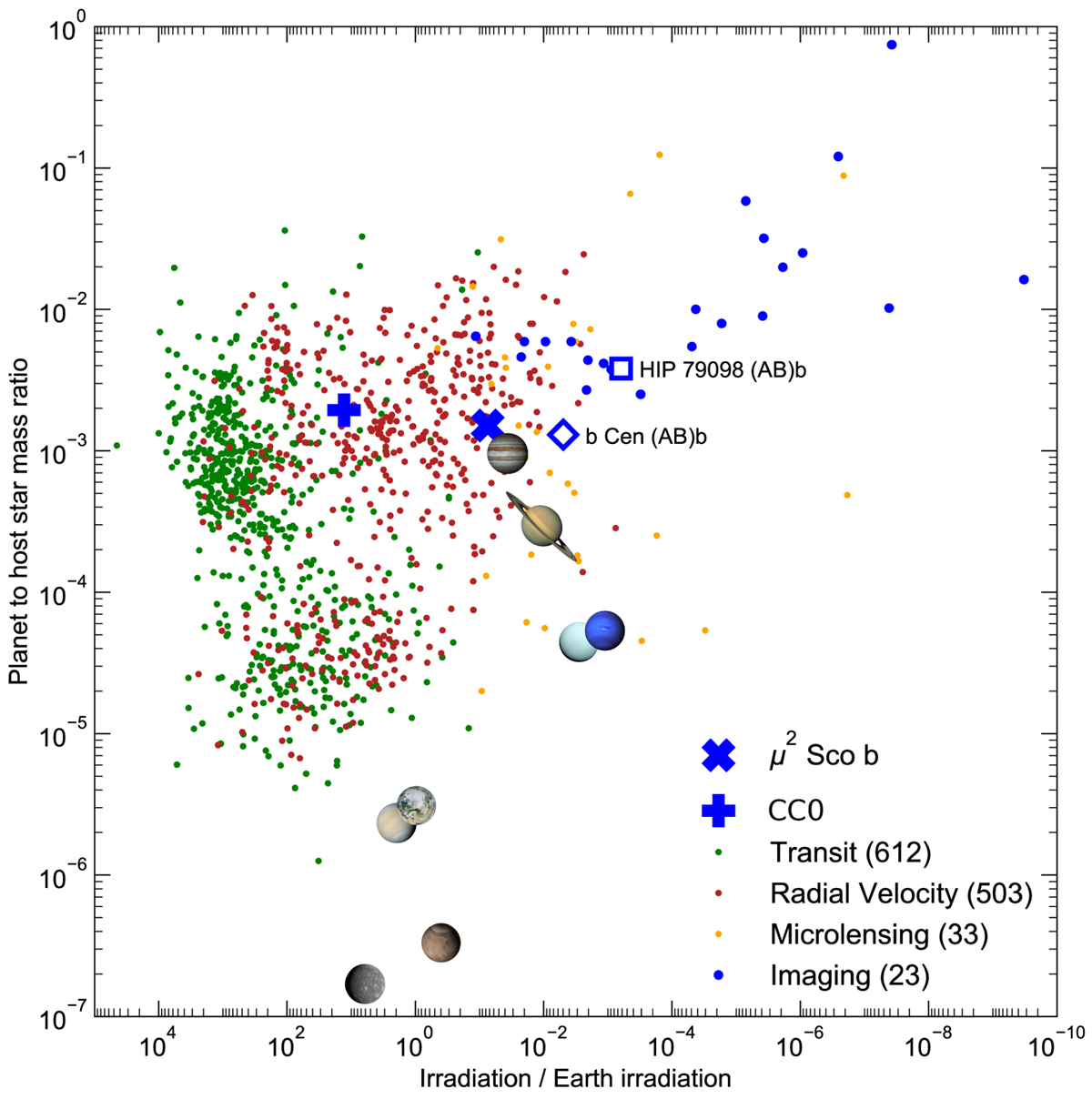Fig. 14

Download original image
Mass ratio vs. irradiation for known exoplanets. Only exoplanets whose stellar host mass is known to a precision of at least 30% are shown. Each planet is labeled according to its detection method: transits in green, radial velocity in red, microlensing in orange and direct imaging in blue. BEAST discoveries are overplotted with larger blue symbols, and circular orbits with radius equal to the observed projected distance are assumed; Solar System planets (images from NASA) are also shown for reference. µ2 Sco b can be considered a Jupiter analog both in terms of irradiation and mass ratio (similar to the directly imaged 51 Eridani b; Macintosh et al. 2015, obscured here by the icon for Jupiter) while the irradiation received by probable CC0 is similar to Mercury’s. Sources: NASA Exoplanet Archive (https://exoplanetarchive.ipac.caltech.edu/), the Extrasolar Planets Encyclopaedia (http://exoplanet.eu/).
Current usage metrics show cumulative count of Article Views (full-text article views including HTML views, PDF and ePub downloads, according to the available data) and Abstracts Views on Vision4Press platform.
Data correspond to usage on the plateform after 2015. The current usage metrics is available 48-96 hours after online publication and is updated daily on week days.
Initial download of the metrics may take a while.


